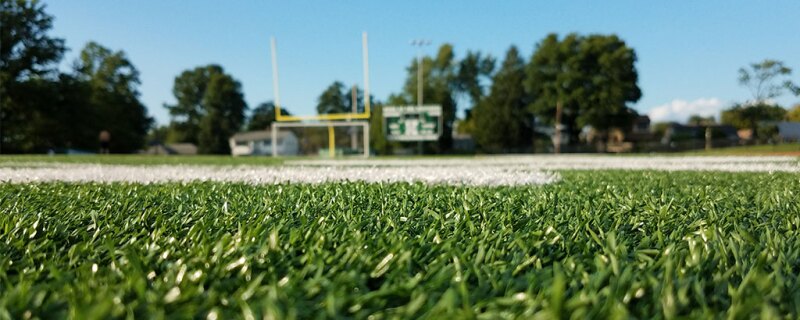Athletic field maintenance safety risks
Creating a safe environment for players and spectators is an important part of athletic field maintenance. Common exposures can include:
- Holes or uneven ground on fields
- Unclean fields (rocks, sticks, debris, and trash)
- Fields or courses improperly set up
- Children playing underneath bleacher seats
- People climbing on hoops, goal posts, and fences
Prevent injury with proper athletic field maintenance, inspections, and by following best practices.
Year-round maintenance and inspections
Develop an annual maintenance plan and be sure to include inspection and maintenance even when a field is not actively in use. Factors like weather, changing seasons, and use make maintaining athletic fields an important consideration all year.
Bleachers and stadium seats
Bleachers and stadium seats present a unique liability exposure. For example, there can be exposed edges, trip hazards, weight limitations, old/rotting wood, rust, weak guide rails and supports.
Remove bleachers when not in use. If that is not possible, close off bleachers when not needed to deter use. Download our bleachers and stadium seats checklist below to help with regular maintenance.
Pesticides and herbicides application
Never apply pesticides and herbicides in a timeframe that could overlap with field use. Maintenance crews or service providers must be aware of the game schedule, including expected team arrival, set-up times, and even practices. Coordinate the pesticide application based on the manufacturer’s recommended timeframes for safe use after application.
Athletic field maintenance checklist and safety resources
Download our pre-game athletic field maintenance checklist below to help create a robust safety program. This checklist can help staff routinely inspect for common safety hazards to help prevent injuries from spectators and players.
Some checklist questions include:
- Are field rules clearly posted?
- Is the field set up properly as dictated by the games’ common rules?
- Is the field completely clear of trash or debris?
- Are the anchors that hold down the equipment or goals properly fastened?
- Is there any exposed hardware (nails, screws, bolts, etc.)?
- Is protective padding in place and secured?
- Are the lights working and are there no visual impairments?
Our policyholders also have access to our expert risk management consultants that can provide additional insights, safety programs, and help. Find your risk management consultant to discuss your specific needs and get customized safety tips.



